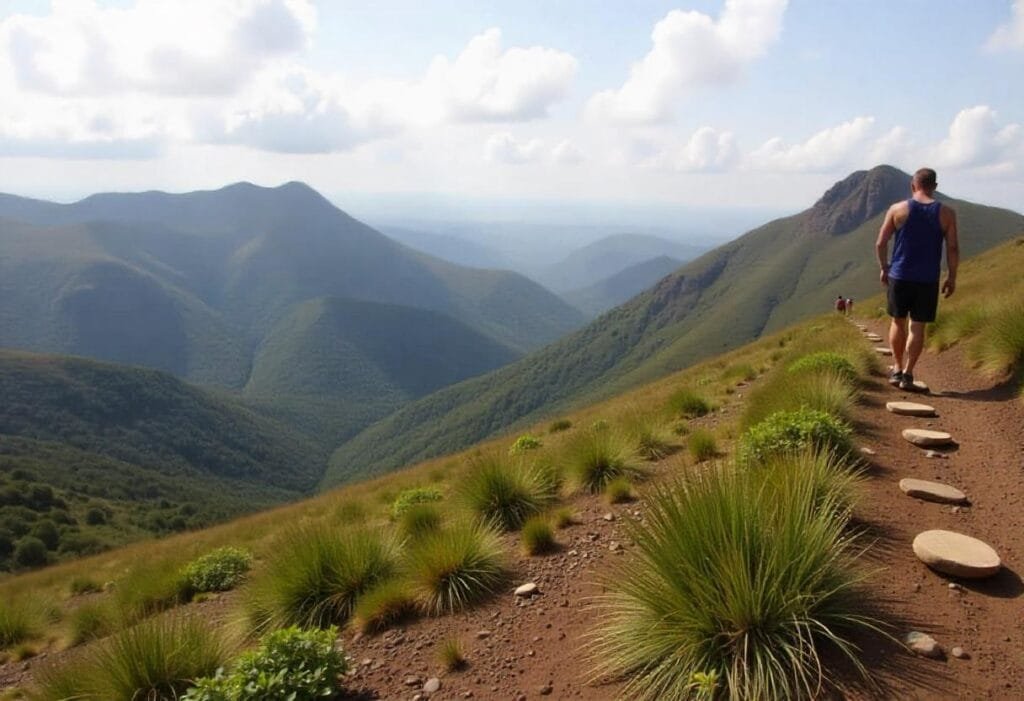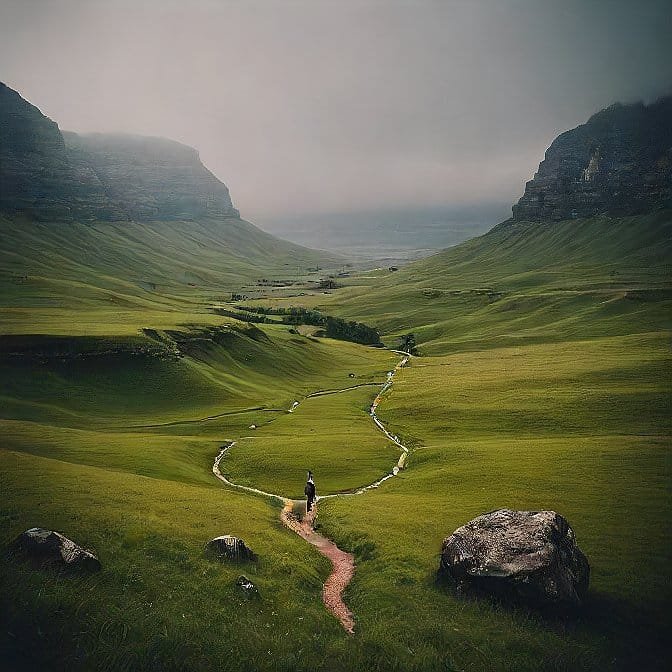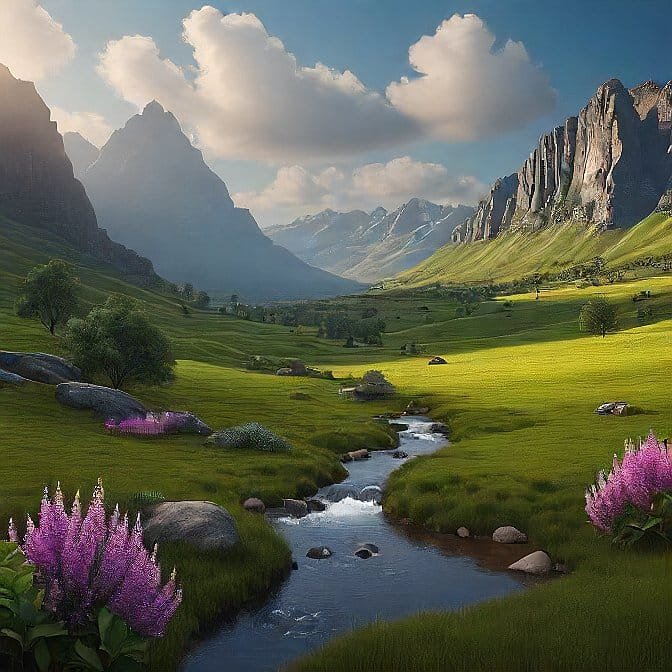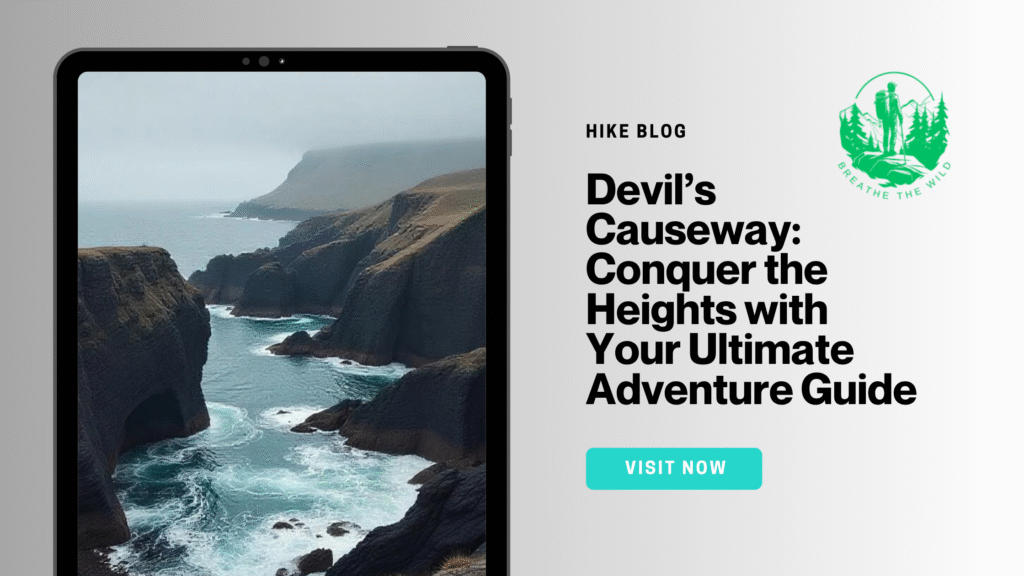Table of Contents
Introduction: What Makes the Drakensberg Grand Traverse So Legendary?

An actual adventure which has earned itself a supreme adjective in being raw, remote, and memorable: the Drakensberg grand traverse is therefore one to note and above your radar. This mythic journey is along the craggy seaward boundary between South Africa and Lesotho, and not so much a hike as it is a test of endurance, map-reading, and sheer determination.
The Drakensberg grand traverse lacks all the contrasts to the popular treks and trails, which have all the facilities like seats and well-trodden paths. You are going to struggle through over 230 kilometers of wild terrain, climb mountains, and navigate through the river valley using GPS and intuition alone. Every time you land, you are deeper in the open, sweeping, breath-taking terrain where the wild horses are free and a change in weather is imminent.
And in this guide, we will gobble up every bit you need to know about this world-class wilderness route, gear, and firsthand advice of actual hikers who have tried it themselves. And whether you are considering tackling the experience yourself or even whether you are just one of us extreme hiking aficionados, here is your backstagewalkthrough of one of the best-compensated trips on planet earth.
Where Is the Drakensberg Grand Traverse? Discover the Wild Heart of South Africa
Drakensberg Grand Traverse is conducted on the magnificent interstate plateau along the Lesotho and South African mountains of Drakensberg. It is the tallest in the entire Southern African region and forms a breath taking natural demarcation line between the two countries, The Dragon Mountains which are simply named after their dragon like characteristics, these jagged mountain belts are the tallest in the whole region.
It cannot be called a typical hiking spot. The Drakensberg mountains, whose length is over 1000 kilometers and have steep basaltic cliffs, uplifted flatland, and steep valleys, were formed with the help of the prehistoric rivers. It belongs to one of the UNESCO World Heritage Sites with diverse biodiversity, endemic flora and fauna, San rock art and wildlife, including baboons, eland, and vulnerable vultures.
At some point, as you race along the Drakensberg Grand Traverse, you come to the realization that you are in the wild heart of Africa….. pristine, wild, and incredible.
The Route: From Sentinel Car Park to Bushman’s Nek
The official kick-off point of the Drakensberg Grand Traverse is Sentinel Car Park in the north, towards the world-famed Amphitheatre Wall, and the end of the Traverse is the south at Bushman Nek Border Post. Between the two, there lay an epic-distance journey of over 230 kilometers through lands of the most remote and hilly terrain one can find in Africa.
As they hike away, they summit some of the larger heights and features:
- Tugela Falls -It is ranked as one of the highest waterfalls in the world
- Mont-aux-Sources is one of the foremost water sources and the most significant stopping place
- These mountains include Cleft Peak, Champagne Castle, Giant Castle, and Thabana Ntlenyan, one of which the Ntlenyana tops as the highest point in southern Africa, and the height stands at 3482 meters.
- Cathedral Peak Cathedral Peak is a breathtaking spire and views of ridges.
This is not just a point A to point B path, but rather of getting an insight into the rough nature and physical extremes, not to mention the outstanding scenery that changes in two-kilometer intervals.
No Trails, No Signs: Embrace the True Spirit of Wilderness Navigation
Because of this, unlike a majority of hiking trails, the Drakensberg Grand Traverse does not provide an official trail, trail signs, or marker posts. Correct–you are perfectly left to your own navigation. This is not where the pretend is.
You will have to depend on the available GPS coordinates, topographical maps, and knowledge of navigating using a compass to help you survive through the course. The weather may suddenly change, landmarks become difficult to notice, and one will be disadvantaged with slippery slopes on the trails.
Such a lack of signage is not accidental; it is, in fact, part of the appeal. There is an element to adventure, an exploration, of finding your way that brings a certain authenticity that is hard to feel on many treks. However, do not make a mistake; it requires stringent preparation, navigational expertise, and an independent spirit.
Check Out: Devil’s Causeway: Conquer the Heights with Your Ultimate Adventure Guide.
What Makes the Drakensberg Grand Traverse the “Ultimate Challenge”?
This hike can be said to be a mental and emotional quest as well as a physical endurance, in that it takes the hikers to the edge. That is why it is regarded as one of the hardest hikes on Earth:
- Physical Requirements: You are going to have huge climbing, walking down slippery, walking through rocky juts, and changing levitation at high altitude challenges, even for experienced hikers. Weather can skyrocket to blistering hot and drop to chilling fogs or thunderheads that cover the area-even on the same day.
- Mental Toughness: Such an expanse of emptiness implies a lot of solitude, days without any human contact. You will need to make essential choices, feel motivated, and noo lose your calm when things are not going right.
- Long Term Stamina: The average hiker wallows in 10-14 days covering the entire traverse. Some are tedious to break a speed record, but the fastest take more than 40 hours to move. The rate of success is low, and many get turned back having been beaten by the weather, or burned out, or lost.
This is not just a hike; it is a personal challenge, and it requires courage, grit, and respect for nature.
When to Go: Best Time to Hike the Drakensberg Grand Traverse

The time of the year and pre-planning are also very important when you want to make your same journey on the Drakensberg Grand Traverse.
Ideal Seasons:
- April to May: Months after summer, when there are cooler temperatures and skies that are clearer
- September through October: Early spring has steady weather conditions and dry land areas
Seasons to Avoid:
- Summer (November to February): Thunderstorms, heatwaves, and slippery paths are common features in summer.
- Winter (June to August): Violent winds, snow, and temperatures below degrees- good only with advanced hikers
Hiking in the shoulder seasons will help you minimize risks connected to the weather and enhance visibility to navigate.
Training and Preparation: How to Get Physically & Mentally Ready
The Drakensberg Grand Traverse requires preparation even among the more acclimatised hikers. It challenges endurance, prowess, and mind power.
Physical Conditioning:
- Intensify on trail running and cycling actactivitiesardio exercise sessions.
- Establish strength with squats, lunges, and step-ups while wearing a backpack
- Train long hikes with climbs and load-out- out Training Practice long-distance hikes with altitude ascent and full packs
Navigation and Survival Skills:
- Find out the use of a compass and interpreting topographical maps
- Get acquainted with your GPS and spare batteries
- Train to erect a CAa amp and to cook outside in a variety of weather conditions
Mental Preparation:
- Exercise the mind with repeated training by going alone on hikes and other long-term treks.
- Fashion a practical emergency plan
- Train tolerance to pain, isolation, and uncertainty
Preparation does not only concern reaching the finish, but also that you put on it in order to go back safely.
Permits, Safety, and Responsible Hiking

It is always important to know the legal and moral obligations of the Drakensberg Grand Traverse before you start to undertake the same.
Permits and Border Regulations:
- In particular, park sections of uKhahlamba-Drakensberg Park, permits are also required to hike.
- Some sections of the route are in Lesotho, hence it is wise to carry a valid passport
- When necessary, you need to register your hike, particularly when commencing in the reserves that are under protection
Safety Essentials:
- Personal Locator Beacon (PLB) or a satellite communication device of some sort
- Be aware of the South African and Lesotho mountain rescue contact details
- Leave a plan of the route you intend to take and what date you are expected to be back with someone. Always have someone who knows where you are going and when you will be back
Responsible Hiking Practices:
- Abide by the Leave No Trace practices: carry out all garbage and keep wild animals at peace
- San rock art sites should not be touched or harmed because it is culturally and historically sacred
- There are ways to behave whilst traversing through grazing areas and respecting livestock and local people
Being prepared and respectful will also help in maintaining the wilderness of the Drakensberg as an adventure for future adventurers.
Conclusion:
This is not only a hike, though; this is an expedition in one of the most rugged, remote, and awesome places you will find in Africa. This hike can be called the thorough test of your body, mind, and soul because, despite no marked paths, support stations, and shortcuts, it will require all of these.
However, with proper preparation and the attitude to take on the challenge, rewards are inexpressible. High mountains, alpine zones, Stone Age rock paintings, and complete isolation that is hiking as it is. If it is personal development, adventure, and the lust to bring yourself away from the real world, this trip will leave an impression.
And when you feel like dancing beyond the mundane to the brink of the extraordinary, the Drakensberg Grand Traverse comes to greet you.
For more info: Click Here.
FAQs About the Drakensberg Grand Traverse
Q1: What is the Drakensberg Grand Traverse time?
An average of 10-14 days is necessary to complete the entire traverse, with tradeoffs depending on the weather, the degree of fitness, and route choice. There are endurance athletes who would do it in less than 60 hours, although most will not be advised to go that fast.
Q2: Do I require a guide in order to trek the Drakensberg Grand Traverse?
No, the path is not marked and self-guided. Yet, in case you are not knowledgeable in GPS navigation in forests and wilderness, multi-day hikes, local teacher hiring is well recommended as a safety measure.
Q3: Can novices do the Drakensberg Grand Traverse?
No. This trek is ranked among the toughest in the world. It demands special physical fitness, wilderness knowledge, and good navigation abilities. First-timers are encouraged to do short day hikes around the Drakensberg region first, to be able to take on the full traverse.




You’ve the most impressive websites.
Thanks!!!!